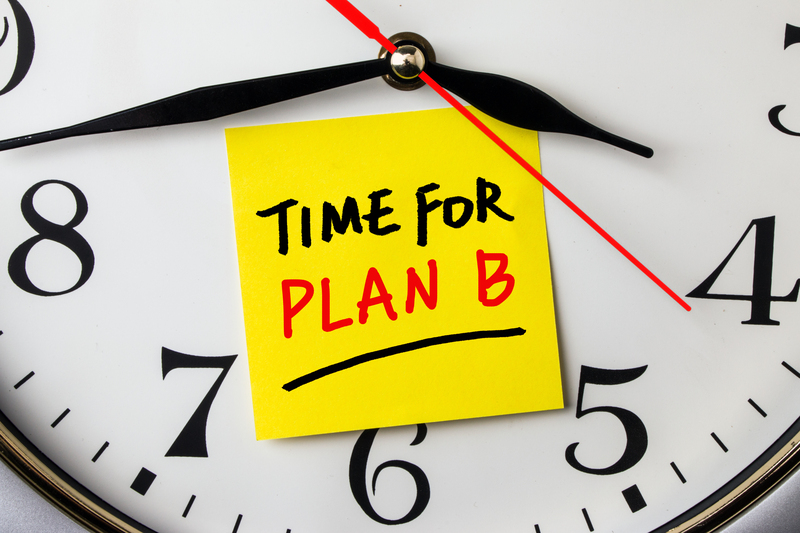How to Protect Your Bed and Mattress During a Move: A Comprehensive Guide
Moving to a new home is both an exciting and challenging experience. Among your most valuable and often overlooked possessions is your bed--and especially your mattress. Protecting your bed and mattress during a move is crucial for ensuring you get a good night's sleep in your new home right away, without stress or worry about potential damage or dirt. In this comprehensive article, we'll explore a variety of strategies, tips, and best practices for how to protect your bed and mattress during a move. With a bit of planning and attention to detail, you'll keep these essentials safe and clean throughout the moving process.
Why Is It Important to Safeguard Your Mattress and Bed When Moving?
Your bed frame and mattress are substantial investments. Whether you own a luxury mattress or a simple bed frame, both expose you to risks during a move:
- Dirt, dust, and moisture can permanently stain or contaminate mattresses and bedding.
- Bedsheets, slats, and frames might get bent, scratched, or broken if not properly packed.
- Improper handling can damage delicate pillow tops, springs, or memory foam in mattresses.
- Mishandling can void mattress warranties that require a certain standard of care during transport.
Protecting your bed and mattress during a move pays off by preserving comfort, hygiene, and value.

Essential Supplies for Protecting Beds and Mattresses During a Move
To adequately protect your sleeping furniture, you'll need the following materials and supplies:
- Mattress bags - Opt for high-quality, heavy-duty plastic or fabric covers that offer water, dirt, and tear resistance.
- Furniture blankets or moving pads - These provide excellent cushioning against bumps and scrapes on frames and headboards.
- Bubble wrap and packing foam - Use for extra fragile components or delicate bed finishes.
- Sturdy packing tape - Secure covers and wraps in place using strong, wide tape.
- Box or toolkit - Essential for disassembling and reassembling bed parts easily and efficiently.
- Stretch wrap or shrink wrap - Helpful in keeping bed parts together and preventing scratches.
- Moving straps or ropes - Useful for carrying and securing heavy or awkward components.
Step-by-Step Guide: How to Protect Your Mattress During a Move
Carefully preparing and packing your mattress ensures it arrives in your new home in pristine condition. Follow these detailed steps:
1. Clean Your Mattress First
Start by cleaning your mattress. Remove all bedding and vacuum both sides to remove dust, hair, and particles. For stubborn stains or odors, spot clean with a gentle upholstery cleaner and allow the mattress to dry completely before proceeding.
2. Invest in a High-Quality Mattress Bag
Mattress protection during a move is best assured with dedicated mattress moving bags. These are available in various sizes to fit twin, full, queen, king, or even California king mattresses. Slip the bag over the mattress, making sure it is fully covered, and seal securely with strong tape.
- Avoid using cheap or thin plastic covers, which can tear easily and expose your mattress to elements.
- Look for bags with handles for easier lifting and transport.
- Consider waterproof mattress bags if you expect bad weather or have to move your mattress outdoors.
3. Seal and Reinforce the Mattress Bag
After placing the mattress in the bag, use packing tape to seal all open ends and reinforce corners. This extra step prevents dust or moisture from sneaking inside. Make sure the mattress bag remains well-fitted, avoiding excess air pockets that can lead to punctures or rips.
4. Proper Lifting and Carrying Technique
Always lift the mattress with care. Stand the mattress upright and use moving straps if needed. Avoid dragging or folding the mattress, especially if it has innerspring or memory foam components. *Folding can permanently damage the structure!*
- For larger mattresses (queen, king, or California king), always have at least two people carry the mattress to avoid injuries or accidental drops.
- Ensure the mattress is not placed under heavy items inside the moving truck.
- Avoid exposing the mattress to direct sunlight or rain during the move.
5. Securing the Mattress Inside the Truck
To further protect the mattress during transit:
- Stand it up on its side along the wall of the truck, never flat on the floor where it could pick up grime.
- Use ropes, bungee cords, or moving straps to secure the mattress in place and prevent shifting.
Properly securing your mattress is crucial for avoiding bends and damage during sudden stops or sharp turns.
How to Protect Bed Frames, Headboards, and Footboards During a Move
While mattresses are at risk of dirt and stains, bed frames, headboards, and footboards are vulnerable to scratches, chips, and structural damage. Here's how to move them safely and efficiently:
1. Disassemble the Bed Frame Completely
Whenever possible, take apart the bed frame into its basic components - side rails, slats, support beams, headboard, and footboard. This not only makes transport easier but also reduces the risk of breakage.
- Document the disassembly process. Take photos on your phone so reassembly is a breeze in your new home.
- Keep all screws, bolts, and assembly hardware in a labeled, resealable plastic bag. Tape the bag to a large piece of the frame or keep it in your "first unpack" box.
2. Wrap Each Piece for Protection
Once disassembled, wrap each bed component with moving blankets, foam, or bubble wrap.
- Use moving pads or old blankets to cushion wood or metal frames from scratches and dents.
- Secure wrapping in place with packing tape, making sure it doesn't touch finished or painted surfaces as adhesive can sometimes leave marks.
- For upholstered headboards, use stretch wrap to keep fabric clean and dust-free.
3. Label Parts and Keep Hardware Organized
Clearly label each part, especially if your bed frame is complex or custom. This will save you hours of frustration during reassembly. Use masking tape and a permanent marker to identify sides, tops, and bottoms.
- Group similar parts together using stretch wrap or zip ties.
- Never tape hardware or labels directly onto finished wood, fabric, or metal surfaces.
4. Transport With Care
Load the bed pieces last onto your moving truck so they are first off at your new home and not crushed during transit. Place them flat or upright against the sides of the truck, using ropes to secure and prevent movement.
Special Tips for Protecting Memory Foam and Hybrid Mattresses
Memory foam or hybrid mattresses require even greater care, as they are heavier, more awkward, and can be damaged by improper handling:
- Never fold a memory foam mattress, which can cause permanent creases or compromise the foam's integrity.
- Opt for a breathable mattress bag to reduce the risk of mold or mildew development, especially if the mattress will be in storage.
- Support the mattress evenly during lifting to avoid stress on one edge or corner.
- Do not stand hybrid mattresses on their side for long periods, as internal coils can shift or distort.
Should You Hire Professionals for Moving Your Bed and Mattress?
If moving a particularly valuable, heavy, or awkward bed and mattress, consider hiring professional movers:
- They possess experience with delicate and oversized items, reducing risk of damage or personal injury.
- Professional movers carry high-quality protective materials and lifting equipment.
- They typically offer insurance coverage for peace of mind.
- Some moving companies offer specialty mattress boxes or crates for long-distance moves or storage.
Always secure a written estimate and clarify if mattress and bed protection materials are included in the service quote.
Common Mistakes to Avoid When Moving Your Bed and Mattress
To ensure optimal bed and mattress protection during a move, steer clear of these frequent pitfalls:
- Skipping the mattress bag or relying on thin sheets to protect your mattress.
- Not labeling bed frame parts or hardware, leading to confusion and wasted time during reassembly.
- Dragging or folding the mattress, risking costly and irreversible damage.
- Piling heavy objects on the mattress or bed components in the truck.
- Leaving the mattress exposed to rain or high humidity during the move.
What to Do Once Your Bed and Mattress Arrive at the New Home
Unloading and reassembling your bed and mattress properly is the final piece in ensuring lasting protection and comfort.
- Move the bedframe and mattress into your bedroom first, clearing the area of obstacles.
- Inspect the mattress and bed parts: before unwrapping, check for visible signs of damage, tears, or stains.
- Remove the mattress bag and allow it to air out, especially if it's been in storage or wrapped tightly for more than a few hours.
- Reassemble the bed using your labeled parts and hardware, consulting your photos if necessary.
- Check for structural stability before putting on fresh bedding and using your bed.

Additional Tips for Moving and Protecting Your Bed and Mattress
- Plan your move on a dry, clear day if possible to avoid rain and excessive moisture risks.
- Ask friends or family to help when moving bulky mattresses or frames--more hands make lighter work.
- Keep pets and children away from wrapped mattresses and bed parts to prevent tripping or tearing the protective materials.
- For moves into multi-story homes or apartments, measure doorways and staircases to ensure your bed and mattress will fit through without damage.
- Consider professional storage with climate control if you can't move in right away--this preserves mattress and frame integrity in the interim.
Conclusion: Keep Your Bed in Pristine Condition--Protect Your Mattress and Bed During a Move
By taking the time to properly protect your bed and mattress during a move, you're investing in your sleep quality and comfort for years to come. The right supplies, packing method, and moving techniques ensure your mattress stays clean, hygienic, and undamaged. Whether you are doing the heavy lifting yourself or hiring professionals, small details--like using quality mattress covers and proper labeling--make all the difference.
Follow these comprehensive tips for how to protect your bed and mattress during a move, and arrive at your new home ready to rest easy--knowing your most valued sleep essentials are safe, sound, and ready for sweet dreams.
Looking for more advice on moving and home organization? Check out our related articles for pro tips on making moving day smooth and stress-free!



